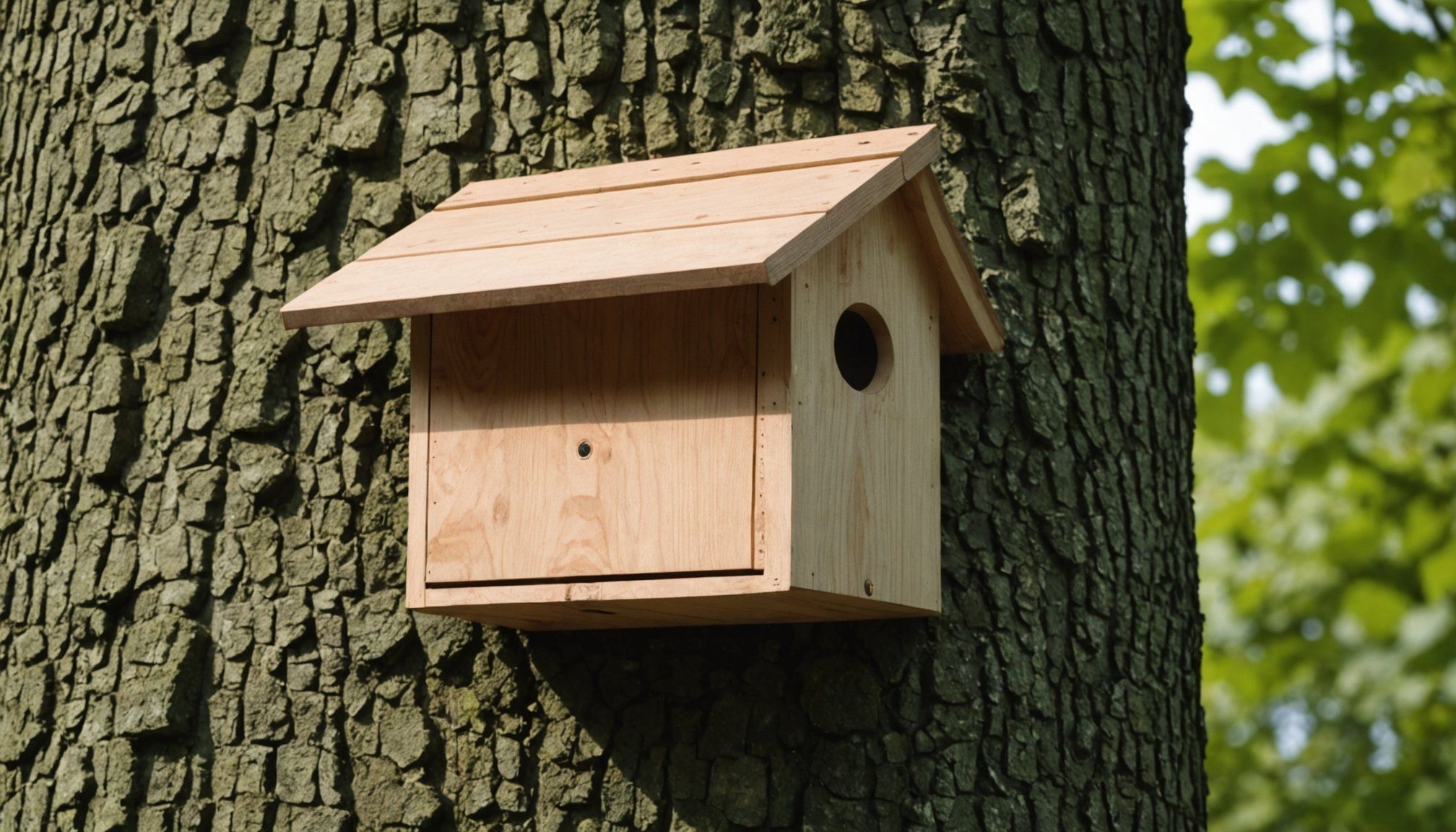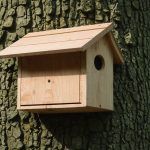Crafting the Perfect Bat Boxes for Your Local Environment: An Ultimate Guide for UK Homeowners
Why Bat Boxes are Essential for Your Garden
If you’re a UK homeowner who cares about the environment and wants to enhance the biodiversity of your garden, installing bat boxes is an excellent idea. Bats are crucial for maintaining a healthy ecosystem, as they help control insect populations, which in turn protects your plants and reduces the need for pesticides.
“Bats are incredibly important for our environment,” says Dr. Kate Jones, a leading bat expert. “A single bat can eat up to 1,000 insects in an hour, making them a natural and eco-friendly way to manage pest control in your garden.”
A lire également : Nurturing nature: practical strategies for uk communities to safeguard local orchid species
Choosing the Right Design for Your Bat Boxes
When it comes to designing bat boxes, several factors need to be considered to ensure they are appealing to bats and suitable for your local environment.
Materials and Building
The materials you choose for your bat boxes are crucial. Here are some tips:
A lire également : Enhancing biodiversity: innovative habitat management approaches by uk wildlife trusts
- Use High Quality, Sustainable Materials: Opt for durable, sustainable materials like untreated wood, such as oak or cedar. These materials are resistant to rot and can withstand the elements.
- Avoid Using Composite Decking: While composite decking is low maintenance, it is not the best choice for bat boxes. Bats prefer the natural texture and smell of wood.
- Consider the Size and Shape: Bat boxes come in various sizes and shapes. A typical design is a tall, narrow box with a flat back and a sloping roof to protect against the elements.
| Material | Advantages | Disadvantages |
|
|-----------------------------------------------------------------------------|
|
| Untreated Wood | Durable, sustainable, natural texture and smell | Requires occasional maintenance to prevent rot |
| Composite Decking | Low maintenance, resistant to rot | Not preferred by bats, lacks natural texture and smell |
| Metal | Durable, easy to clean | Can get too hot in sunlight, not preferred by bats |
| Plastic | Easy to clean, low maintenance | Not eco-friendly, can get too hot in sunlight |
Installation and Placement
The placement of your bat boxes is as important as the design.
- Install in a Sunny Spot: Bats prefer warmth, so install your bat boxes in a spot that receives at least 6 hours of direct sunlight.
- Face East or South: These directions receive the most sunlight and are ideal for bat boxes.
- Install Near a Water Feature: Bats need water for drinking and hunting insects, so installing your bat boxes near a pond or stream is beneficial.
- Avoid Installing Near Bright Lights: Bright lights can deter bats, so ensure your bat boxes are installed in a dark or dimly lit area.
Planning and Maintenance
Before you start your project, it’s essential to consider a few planning and maintenance aspects.
Planning Permission
In the UK, you generally do not need planning permission to install bat boxes, but it’s always a good idea to check with your local council if you live in a conservation area or if your home is a listed building.
Maintenance Tips
To ensure your bat boxes remain a welcoming home for bats, here are some maintenance tips:
- Check for Pests: Occasionally check your bat boxes for pests like wasps or mice.
- Clean the Boxes: Clean the boxes every few years to remove any debris or guano.
- Replace if Necessary: If the box is damaged or showing signs of wear, replace it with a new one.
Enhancing Your Garden’s Biodiversity
Bat boxes are just one part of creating a biodiverse garden. Here are some additional tips to enhance your green space:
Planting Green Spaces
- Choose Native Plants: Native plants are more likely to attract local wildlife, including bats.
- Include Water Features: Ponds, streams, or even small water features like birdbaths can attract bats and other wildlife.
- Create a Natural Landscape: Avoid using too many manicured lawns and instead create a natural landscape with trees, shrubs, and wildflowers.
Using Eco-Friendly Products
- Avoid Pesticides: Pesticides can harm bats and other wildlife. Instead, use natural methods to control pests.
- Use Sustainable Drainage: Implement sustainable drainage solutions like rain gardens or permeable paving to reduce water runoff and create a more natural environment.
DIY vs. Pre-Made Bat Boxes
Deciding whether to self-build or purchase pre-made bat boxes depends on your skills and preferences.
Self-Building Your Bat Boxes
If you’re handy with tools, self-building your bat boxes can be a fun and rewarding project.
- Use Online Plans: There are many free plans available online that can guide you through the process.
- Choose the Right Tools: Ensure you have the necessary tools, such as a saw, drill, and hammer.
- Involve the Family: Self-building can be a great family project, teaching children about wildlife conservation.
Purchasing Pre-Made Bat Boxes
If you’re not comfortable with DIY projects or prefer a high-quality, ready-to-install option, purchasing pre-made bat boxes is a good choice.
- Look for Eco-Friendly Options: Ensure the pre-made boxes are made from sustainable materials.
- Check for Free Delivery: Many online retailers offer free delivery, which can save you money.
- Read Reviews: Check reviews from other customers to ensure the product is of high quality and effective.
Examples and Success Stories
Here are a few examples of successful bat box installations and their impact on local wildlife.
Case Study: Oak Tree Bat Boxes
A homeowner in the UK installed several bat boxes on an old oak tree in their garden. Within a year, the boxes were occupied by a colony of pipistrelle bats. The homeowner noted a significant reduction in insect pests in their garden, which they attributed to the bats.
Community Projects
Community projects where multiple homeowners install bat boxes can have a significant impact on local biodiversity. For example, a neighborhood in London installed over 50 bat boxes, resulting in a noticeable increase in bat sightings and a reduction in pest problems.
Installing bat boxes is a simple yet effective way to enhance the biodiversity of your garden and contribute to the conservation of these important creatures. By choosing the right design, materials, and installation location, and by maintaining your bat boxes properly, you can create a welcoming home for bats and other wildlife.
Remember, every small action counts, and by incorporating bat boxes into your garden design, you are not only helping bats but also creating a more sustainable and eco-friendly outdoor space for everyone to enjoy.
Additional Resources
For more detailed guides and plans on building bat boxes, you can visit the following websites:
- Bat Conservation Trust: Offers comprehensive guides on bat box design and installation.
- Wildlife Trusts: Provides tips on creating a wildlife-friendly garden, including bat box installation.
- Local Wildlife Groups: Many local wildlife groups offer workshops and advice on installing bat boxes.
By following these tips and resources, you can ensure that your bat boxes are a success and that your garden becomes a haven for these incredible creatures.











